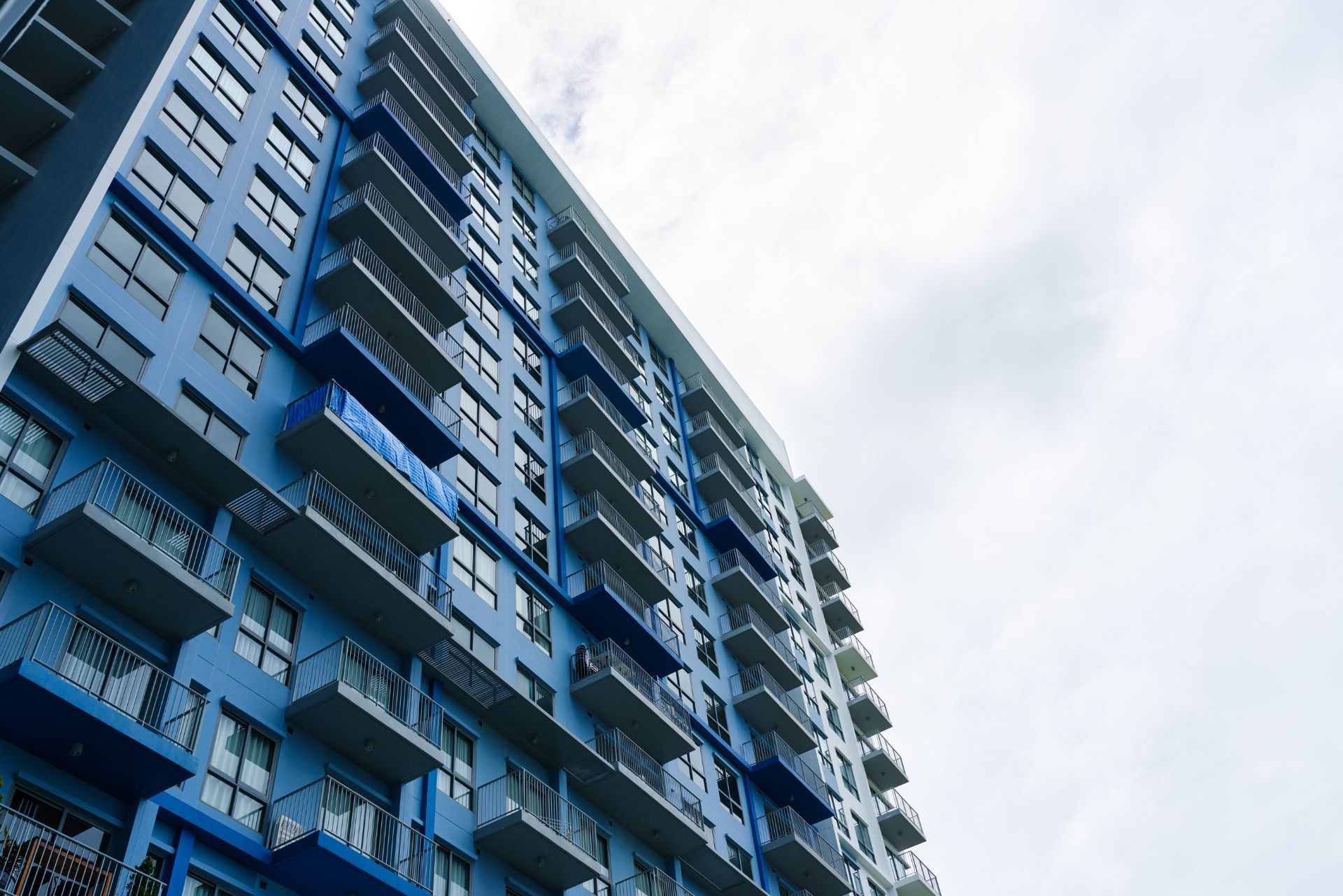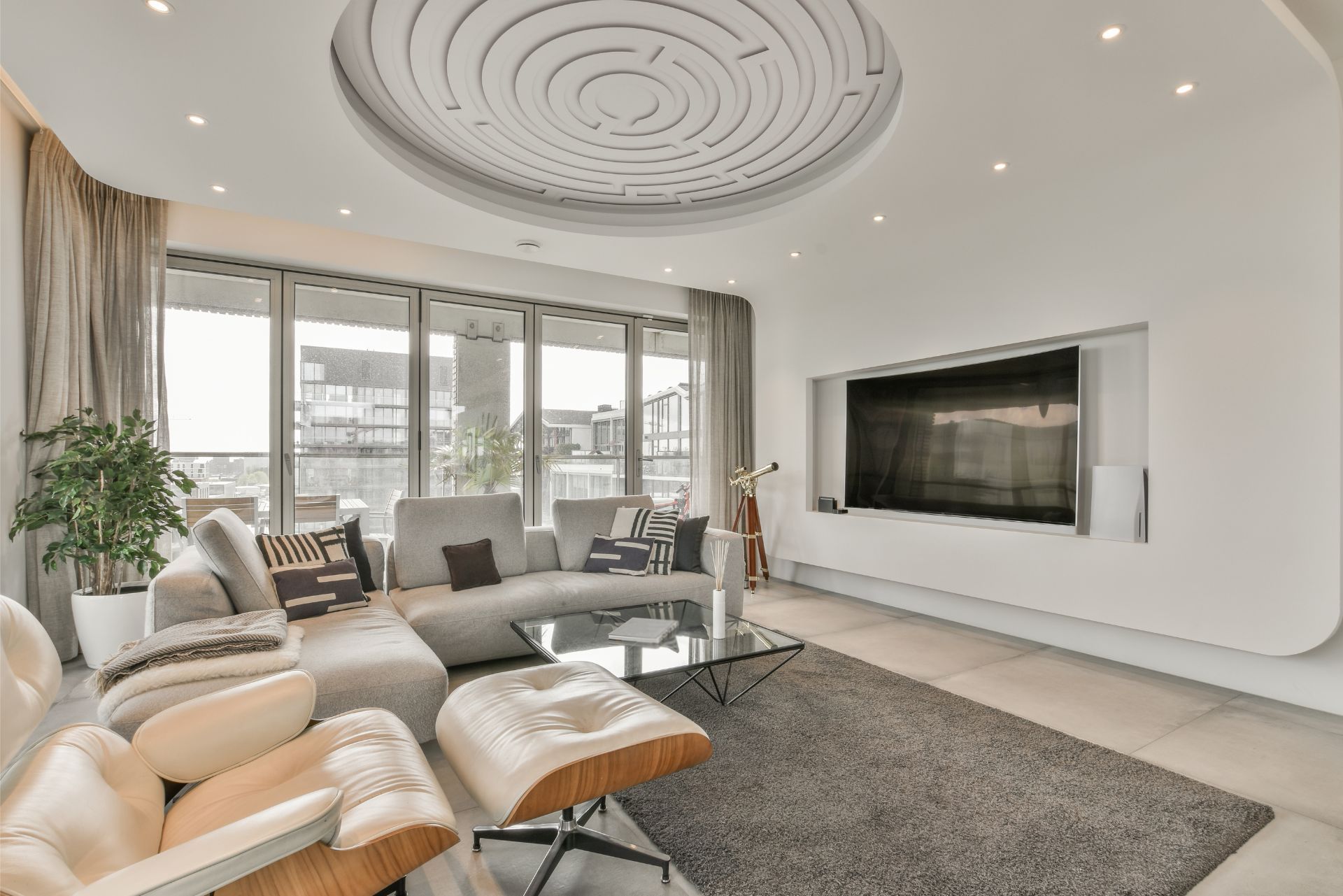Top 3 Recommended Policies

By: David Graves
Licensed Personal Insurance Specialist
425-320-4280
Perched between the Salish Sea and the Cascade Range, Washington State combines dramatic scenery with a vibrant housing market. From sleek downtown Seattle high-rises to restored brick lofts in Spokane and resort-style complexes in the San Juan Islands, condominiums account for a growing share of the state’s residential real-estate transactions. Owning a condo offers freedom from yard work and access to desirable neighborhoods, yet it also introduces unique insurance questions. What exactly does the association’s master policy cover? How do earthquakes and relentless winter rains influence premium costs? And which optional endorsements are worth considering? The detailed guide below examines every critical aspect of Washington condo insurance, giving owners and buyers the practical knowledge required to protect their homes and their finances.
Why Condo Insurance Matters in Washington State
Washington’s condominium landscape is governed by the Washington Uniform Common Interest Ownership Act (WUCIOA), which outlines the responsibilities of homeowners’ associations (HOAs) and sets minimum insurance standards. Those standards, however, are only the starting point. Although an HOA’s master policy typically insures the building’s common elements—lobbies, hallways, elevators, exterior walls, and roofs—individual unit owners remain responsible for their personal property, interior fixtures, and personal liability. Without a well-structured HO-6 policy, owners could face hefty repair bills after a kitchen fire, water damage event, or liability lawsuit.
Data compiled by the Washington State Office of the Insurance Commissioner shows that nearly 25 percent of the property claims filed by condo owners in 2023 involved losses not covered by their associations’ master policies. The average uncovered claim exceeded $9,400, highlighting the financial exposure borne by unit owners who rely solely on association coverage. In a state susceptible to winter windstorms, seismic activity, and occasional wildfires, the importance of a personal condo policy cannot be overstated.

Understanding the Master Policy vs. HO-6 Policy
The condominium master policy insures the structure and common areas owned collectively by all unit holders. Two predominant master-policy styles operate in Washington. The first, called “bare-walls” or “studs-out,” covers only the building shell and shared infrastructure. The second, known as “all-in” or “single-entity,” extends coverage to original fixtures, wiring, and finished surfaces inside each unit. Determining which policy your association carries is essential because it dictates where the HOA’s protection ends and yours must begin.
Regardless of policy style, HOAs may levy special assessments when shared deductibles are triggered or damages exceed policy limits. Many master policies now carry deductibles of $25,000 or more to control premium costs. If a pipe bursts on the fifth floor and damages multiple units, each owner could be assessed a share of that deductible. An individual HO-6 policy with robust loss-assessment coverage can absorb those unforeseen costs.
HO-6 policies bridge the coverage gap by protecting anything not insured by the master policy—renovations, personal belongings, additional living expenses, personal liability, and more. When comparing quotes, unit owners should scrutinize declarations pages and bylaws side by side to ensure seamless coordination between the two policies.
Core Coverages Explained
Building Property & Improvements
In a bare-walls building, the owner must insure flooring, cabinetry, countertops, plumbing fixtures, wall surfaces, and any upgrades such as custom tile or smart-home wiring. The dwelling coverage limit should equal the cost of rebuilding those interior elements with similar materials, not the market value of the unit. Washington contractors estimate average interior rebuild costs between $40 and $70 per square foot for standard finishes, escalating for luxury installations. Completing a room-by-room inventory of finishes helps set an accurate limit and avoids underinsurance penalties after a claim.
Personal Property
Personal property coverage reimburses for furniture, electronics, clothing, appliances, and décor when stolen or damaged by a covered peril. Replacement-cost valuation is strongly recommended, as it pays the current retail price without depreciating for age. Owners who downplay the worth of their belongings often discover, too late, that even modest condominiums can house $30,000 to $50,000 in personal effects once kitchen gadgets, bicycles, and seasonal gear are tallied. For jewelry, fine art, high-end cameras, or collectibles exceeding the standard sub-limits (often $1,500 to $2,500), scheduled personal property endorsements offer broader protection and no deductible on many losses.
Personal Liability
Liability coverage responds when a resident or guest is injured inside the unit, or when an owner is held responsible for accidental damage to a neighbor’s property. Common condo scenarios include an overflowing bathtub that leaks into the unit below, or a family dog nipping a delivery driver in the hallway. Policies usually start at $100,000 of coverage, yet legal defense and medical settlements can quickly eclipse that figure. Many insurance professionals in Washington now recommend limits of at least $300,000, and umbrella policies for owners with sizable assets or significant future earnings potential.
Loss of Use (Additional Living Expenses)
If a covered peril renders the condominium uninhabitable—say, smoke damage from a building-wide fire—loss-of-use coverage pays for temporary lodging, meals, laundry, and other necessary living costs until the unit is repaired. Washington’s rental market is among the priciest in the nation; short-term leases in Seattle often exceed $150 per night, so selecting generous limits is crucial. Policies typically allocate 20 to 40 percent of the personal-property limit to additional living expenses, though higher endorsements are available.
Loss Assessment
Loss-assessment coverage shields owners from large special assessments levied by the HOA after a shared loss. Consider a windstorm that tears significant sections of the roof off a Bellevue condominium. If the master-policy deductible reaches $50,000 and 100 units share the expense, each owner would owe $500. In worst-case scenarios—when master policy limits are exhausted—assessments can climb into the thousands. Washington insurers customarily include $1,000 to $2,000 of loss-assessment coverage by default, yet raising that figure to $25,000 or even $50,000 often adds only a few dollars per month in premium.
Medical Payments to Others
Separate from liability coverage, medical payments reimburse minor injuries sustained by guests, regardless of fault. Limits typically range from $1,000 to $5,000. While modest, the provision can defuse disputes by covering immediate medical bills and reducing the likelihood of a larger lawsuit.
Earthquake and Flood Endorsements
Standard HO-6 policies exclude earthquake and flood damage—two perils that command attention in the Pacific Northwest. The United States Geological Survey places the probability of a magnitude 6.8 or higher quake affecting western Washington within the next 50 years at 84 percent. Condo buildings constructed after 1990 tend to meet stricter seismic codes, but that fact alone does not guarantee post-quake habitability. Earthquake endorsements for condos often carry percentage-based deductibles (10 to 20 percent of the dwelling limit) and cost between $100 and $400 annually depending on proximity to fault lines.
Flood coverage is sold separately through the National Flood Insurance Program (NFIP) and a growing number of private carriers. Even though most condominiums sit outside high-risk flood zones, heavy rain, king tides in Puget Sound, or rapid snowmelt can overwhelm storm drains and infiltrate ground-level units. The NFIP allows owners to purchase up to $250,000 in building items coverage and $100,000 in contents coverage. Securing both endorsements ensures a more complete safety net against Washington’s diverse natural hazards.
Special Washington Risks: Earthquakes, Volcanoes, and Rain
Washington’s unique geography subjects condo owners to hazards that residents in many other states seldom consider. The Cascadia Subduction Zone stretches offshore from Cape Mendocino to Vancouver Island, storing immense tectonic energy capable of triggering mega-thrust earthquakes and subsequent tsunamis. While coastal condos in Long Beach and Ocean Shores may suffer the dual threat of shaking and inundation, inland metro areas like Olympia and Everett are still vulnerable to severe ground motion and liquefaction.
Volcanic activity is less frequent yet historically impactful. The 1980 eruption of Mount St. Helens damaged or destroyed over 200 homes and coated a swath of the state in ash. Although HO-6 policies cover volcanic ash damage under the eruption peril, owners should confirm whether their carriers require separate deductibles for volcanic events.
The final regional menace is relentless rainfall. Seattle averages 152 rainy days each year, and microbursts or clogged gutters can channel water behind siding or into attics. While “surface water” flooding remains excluded without an NFIP policy, sudden and accidental discharge from roof leaks, plumbing, or HVAC systems is covered in most HO-6 forms. Regular maintenance and prompt reporting are critical; insurers may deny claims stemming from long-term seepage or negligence.
How Much Does Condo Insurance Cost in Washington?
The Washington State Office of the Insurance Commissioner indicates that the average annual premium for an HO-6 policy in 2024 is approximately $515, or about $43 per month. Rates vary widely by city: owners in high-rise towers in Seattle’s Belltown might pay $50 to $65 monthly, while counterparts in Wenatchee or Yakima often secure coverage for $30 to $35. Optional earthquake endorsements add a statewide average of $25 to $35 per month, with coastal and downtown Seattle ZIP codes landing at the upper end of the scale.
Increases in construction costs and higher HOA deductibles have nudged premiums upward by roughly 7 percent over the past year. Nevertheless, Washington remains slightly below the national condo-insurance average of about $550 annually, partly because theft and hail claims—major cost drivers in other regions—are less common in the Evergreen State.
Factors That Influence Your Premium
Location and Surrounding Infrastructure
Insurers factor crime statistics, distance to the nearest fire station, and local weather patterns into their rate tables. A unit two blocks from a permanently staffed fire station in Kirkland enjoys lower fire-related premiums than a mountain-view condo outside Chelan with volunteer-only protection. Coastal ZIP codes exposed to windstorms or tsunami risk also borrow higher rates.
Building Characteristics
Construction type plays a significant role: steel and concrete high-rises resist fire and seismic damage better than wood-frame walk-ups. Age of wiring, plumbing, and roof all affect underwriting. Buildings equipped with automatic sprinklers, monitored security, and restricted access entries qualify for sizeable discounts, usually between 5 and 15 percent.
Credit-Based Insurance Score and Claims History
Washington law allows insurers to incorporate credit-based insurance scores, derived from payment patterns and outstanding debt, when setting condo-insurance premiums. Studies cited by the Federal Trade Commission link strong credit management to lower claim frequency, so a high score often translates into double-digit savings. Conversely, multiple claims filed within the past three to five years can elevate premiums or prompt a carrier to decline renewal.
Deductible and Coverage Limits
Raising the standard $500 deductible to $1,000 or $2,500 slashes premiums but increases out-of-pocket costs after a loss. Selecting lower personal-property or liability limits also cuts rates, yet reducing coverage below realistic needs can be penny-wise and pound-foolish. Many Washington agents recommend choosing the largest deductible that would not cause financial hardship if disaster strikes.
Saving Money Without Sacrificing Protection
Washington condo owners have several cost-control levers that do not compromise essential coverage. Multi-policy bundling—combining auto, umbrella, or motorcycle policies with the HO-6—delivers average discounts of 15 percent. Upgrading to a monitored burglar and fire alarm typically yields an additional 5 to 10 percent savings, and the system may qualify for municipal rebates in cities such as Bellevue and Tacoma.
Another strategy is annual coverage review. In dynamic housing markets, unit values and renovation costs can change rapidly. By confirming replacement-cost estimates each year, owners avoid over-insuring for outdated figures and under-insuring after installing premium hardwood floors or marble countertops. Shopping at least three carriers every two or three years keeps premiums competitive, as insurers recalibrate rating factors and file new rate plans with the state regulator.
Finally, participation in condo-association risk-mitigation programs can pay dividends. Some HOAs negotiate group discounts when a majority of owners purchase individual policies through the same carrier, and water-loss prevention technology—automatic shut-off valves, moisture sensors, and braided-steel supply lines—can collectively reduce claims and stabilize future premiums.
Claims Process: Step-by-Step Guide
When disaster strikes, rapid and organized response maximizes claim success. The first step is to ensure safety, then mitigate further damage by shutting off water or securing broken windows. Next, the policyholder should document the scene with photographs, compile a detailed inventory of damaged items, and retain receipts for urgent repairs or additional living expenses. Washington insurers generally require notice of loss “as soon as practicable,” which usually means within 48 hours for non-emergency events.
An adjuster will schedule an inspection, verify coverage, and provide a damage estimate. If the loss involves both the master policy and the HO-6 policy—such as water intrusion that begins in common plumbing and affects unit interiors—close coordination between the two carriers becomes essential. Many HOAs in the state maintain a preferred restoration vendor list that satisfies both insurers’ documentation requirements, expediting payment. Once the scope of work is agreed upon, claim payment typically arrives in two installments: an initial actual-cash-value check and, upon completion, a replacement-cost holdback.
Common Mistakes Washington Condo Owners Make
One prevalent error is assuming personal upgrades fall under the association policy. Granite countertops or engineered-wood floors installed after purchase often lack protection under a bare-walls master policy, yet owners fail to increase dwelling limits accordingly. Another misstep is neglecting earthquake coverage—less than 15 percent of Washington condo owners carry it, despite the state’s significant seismic risk. Finally, some residents store expensive bicycles or ski gear in condo garages, not realizing that theft from common storage areas is only covered when personal-property limits match replacement cost.

Frequently Asked Questions
Does my HO-6 policy cover water damage from my neighbor’s unit?
In most cases, yes. If a dishwasher line in the unit above bursts and water damages your ceiling and personal belongings, your own policy pays for interior repairs and property replacement, subject to the deductible. Your insurer may later pursue subrogation against the neighbor or the neighbor’s insurer if negligence is proven.
Can the HOA force me to increase my individual coverage?
An HOA cannot mandate specific insurance carriers, but it can require owners to maintain minimum liability and property limits when such requirements are codified in the bylaws. Washington courts have upheld bylaws that require proof of coverage as a condition of occupancy, so ignoring these mandates risks fines or legal action.
What happens if the master policy deductible exceeds my loss-assessment limit?
If a special assessment is levied and your loss-assessment coverage is lower than the assessed amount, you must pay the difference out of pocket. Reviewing the master policy’s deductible each year and adjusting your limit accordingly is therefore crucial.
Is mold damage covered in Washington condo policies?
Mold resulting from a covered peril, such as a sudden pipe burst, is usually included, though many insurers cap remediation costs at $5,000 to $10,000. Mold caused by long-term humidity or neglected leaks is generally excluded. Promptly reporting water incidents and following professional mitigation guidelines minimizes coverage disputes.
How can landlords insure condo units they rent out?
When a condo is rented, the owner needs a “condo landlord” form—often called HO-6DP or HO-6 for rental use—rather than a standard owner-occupied HO-6. This version covers the dwelling improvements and provides liability protection tailored to landlord exposure. Tenants should carry renters insurance to protect their own belongings and personal liability.
Final Thoughts
The combination of shared structures, evolving bylaws, and Washington’s distinctive natural hazards makes condo insurance more complex than many owners anticipate. Yet complexity need not translate into confusion. By understanding how the master policy interacts with an HO-6 policy, tailoring coverage to personal property and improvement values, and addressing regional risks like earthquakes and severe rain, Washington condo owners can build a financial shield that endures. Annual policy reviews, proactive risk mitigation, and clear communication with the HOA create a powerful trio, ensuring that a homeowner’s largest investment remains both secure and enjoyable—rain or shine, and even when the ground beneath the Evergreen State decides to shake.

